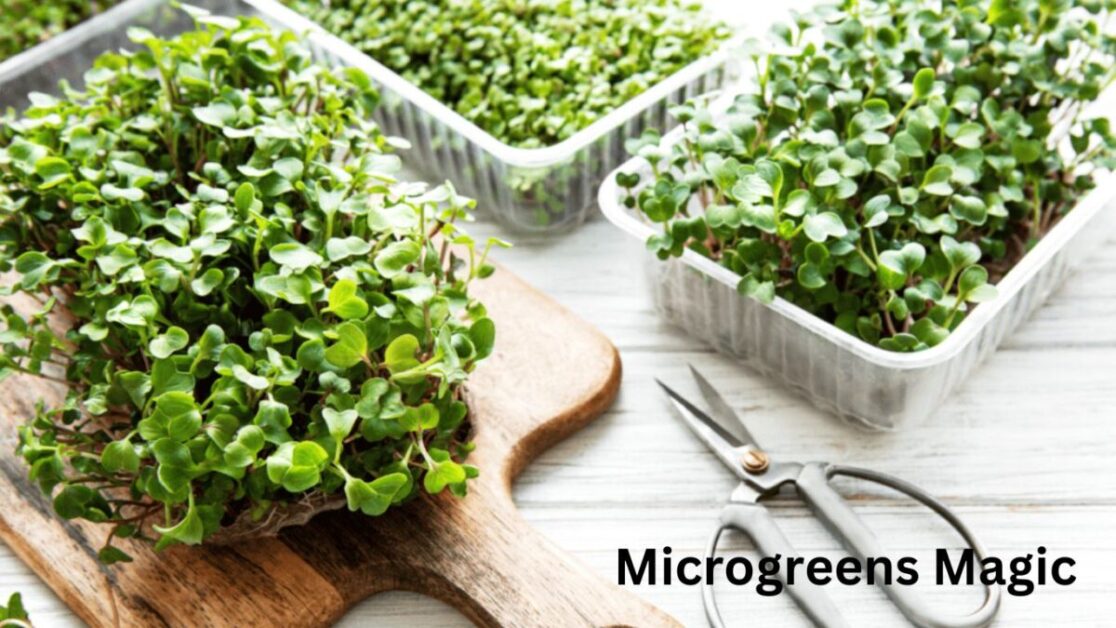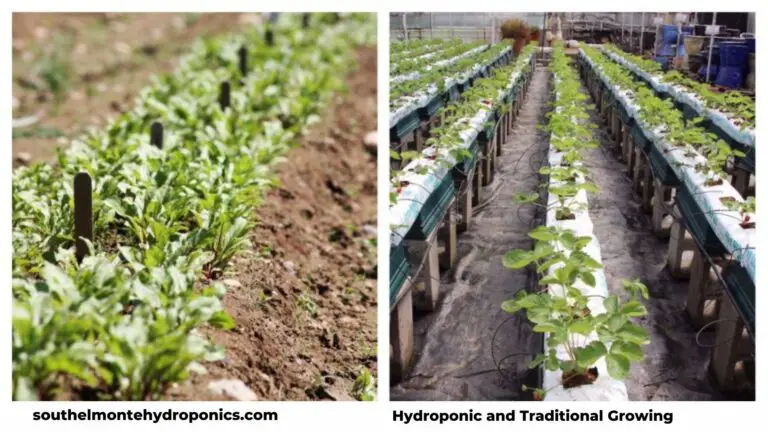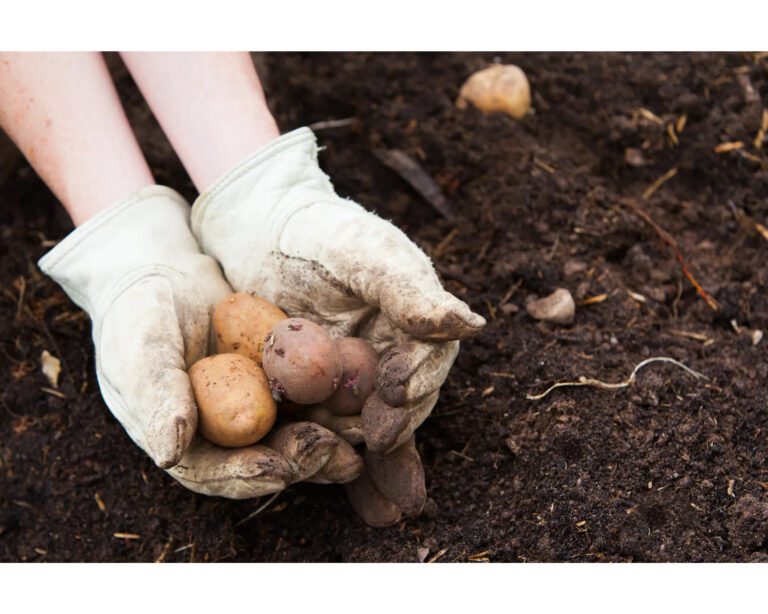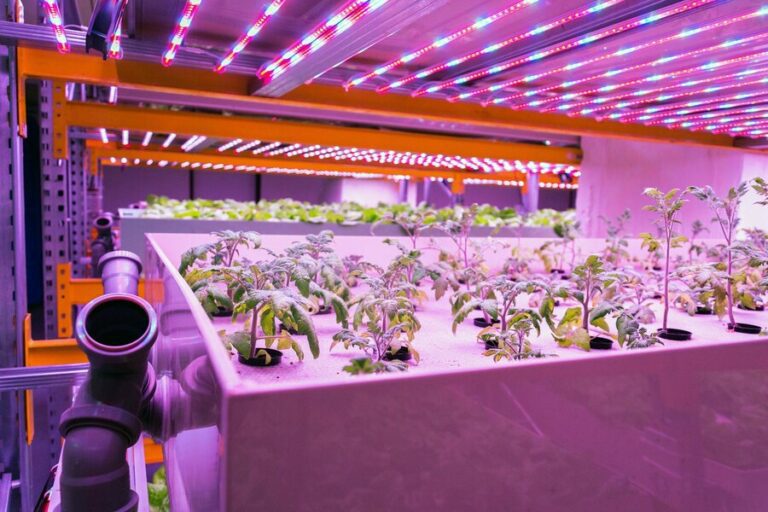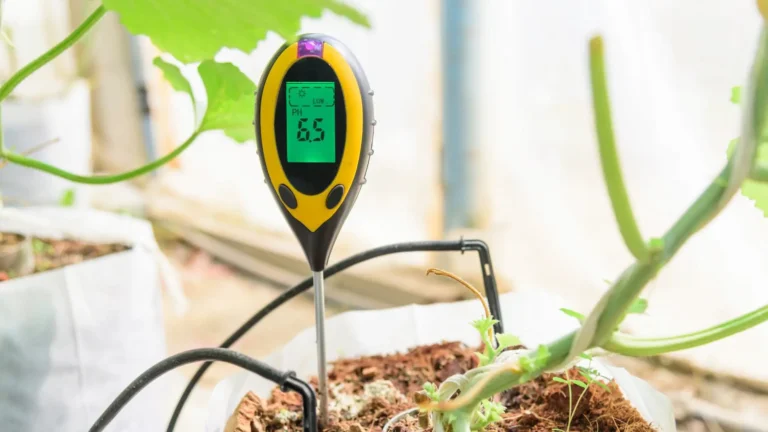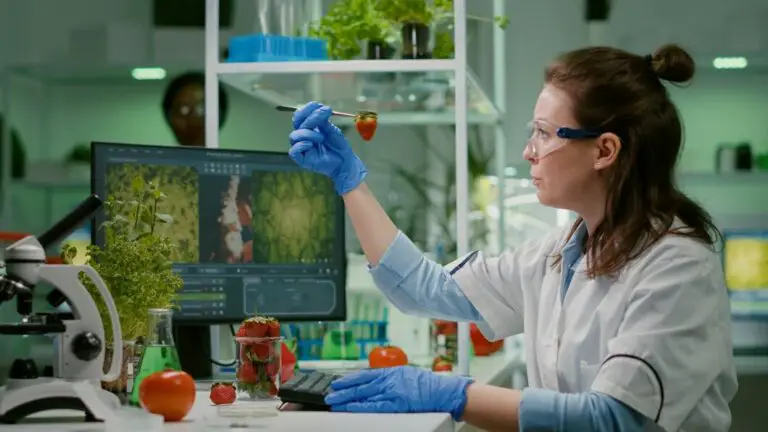Microgreens Magic: Ultimate Guide to Indoor Cultivation via Hydroponics
Table of Contents
Setting Up Your Indoor Garden: Discover the essential equipment and materials needed to create a successful hydroponic microgreens setup Microgreens Magic.
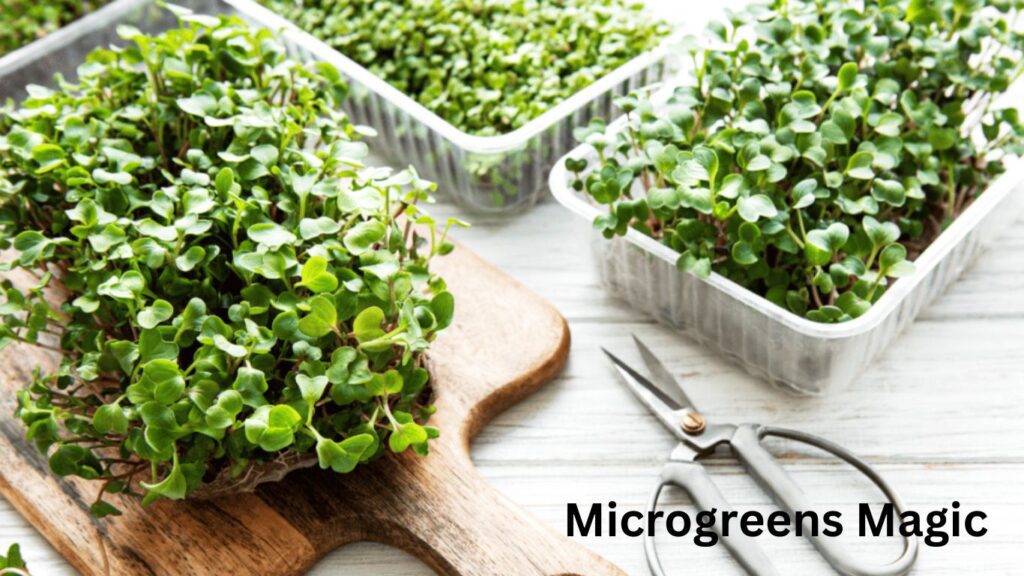
To create a successful hydroponic microgreens setup, there are several essential equipment and materials that you will need. First and foremost, a high-quality grow light is crucial for providing the necessary light and energy for your microgreens to grow. LED grow lights are recommended for their energy efficiency and ability to optimize plant growth. Additionally, you will need a hydroponic system, such as a tray or rack, to hold your growing containers and provide a controlled environment for your plants.
In terms of containers, consider using food-grade plastic trays or trays specifically designed for hydroponic gardening. These containers should have drainage holes to prevent waterlogging and allow proper air circulation. To support the growth of your microgreens, you will also need a growing medium or substrate. Common choices include coconut coir, rockwool, perlite, and vermiculite. It is important to select a growing medium that retains moisture while also providing good drainage.
Furthermore, nutrient solutions play a critical role in hydroponic gardening. These solutions contain essential minerals and micronutrients that are necessary for the healthy growth of your microgreens. You can either purchase pre-mixed nutrient solutions or mix your own based on the specific requirements of your chosen microgreens.
Lastly, having a pH testing kit and pH adjusters on hand is essential for maintaining the optimal pH level for your hydroponic system. Microgreens generally prefer a slightly acidic pH ranging from 5.5 to 6.5. Monitoring and adjusting the pH regularly will ensure that your plants can absorb the nutrients effectively.
By investing in these essential equipment and materials, you will be well on your way to creating a successful hydroponic microgreens setup. With the right tools in hand, you can provide your microgreens with an ideal environment for growth and maximize their potential yield and flavor.
• High-quality LED grow lights for optimal plant growth
• Hydroponic system (tray or rack) to hold growing containers and provide a controlled environment
• Food-grade plastic trays or hydroponic-specific trays with drainage holes for proper air circulation
• Growing medium or substrate such as coconut coir, rockwool, perlite, or vermiculite that retains moisture while providing good drainage
• Nutrient solutions containing essential minerals and micronutrients for healthy growth
• pH testing kit and pH adjusters to maintain the optimal slightly acidic pH level of 5.5 to 6.5
By investing in these essential equipment and materials, you will be well on your way to creating a successful hydroponic microgreens setup. With the right tools in hand, you can provide your microgreens with an ideal environment for growth and maximize their potential yield and flavor.
Creating the Ideal Growing Environment: Learn how to optimize temperature, humidity, and lighting conditions to promote healthy microgreen growth.
Creating the ideal growing environment is crucial to ensure the healthy growth of microgreens in a hydroponic setup. Optimizing temperature, humidity, and lighting conditions can significantly impact the quality and yield of your crops.
Firstly, maintaining the correct temperature is essential. Most microgreens thrive in temperatures between 60 to 75 degrees Fahrenheit (15 to 24 degrees Celsius). It is important to provide a consistent temperature throughout the day and night to avoid fluctuations that may inhibit growth. Using a thermometer to monitor and regulate the temperature is recommended for precise control.
In addition to temperature, humidity levels also play a vital role in microgreen cultivation. Generally, humidity should be kept between 50% to 60% during germination and reduced to 40% to 50% during the growth phase. Higher humidity can result in excessive moisture, leading to fungal diseases, while lower humidity can cause dehydration and inhibit growth. Proper ventilation, the use of a humidifier or dehumidifier, and monitoring humidity levels with a hygrometer can help maintain optimal conditions.
Lastly, lighting is a key factor in promoting healthy microgreen growth. Providing adequate light, typically in the form of full-spectrum LED or fluorescent lights, is essential for photosynthesis. Aim for 12 to 16 hours of light per day, ensuring that the lights are positioned at an appropriate distance from the plants to avoid heat stress or light burn. Keep track of the duration and intensity of light by using timers and adjusting the light height accordingly.
Creating an optimum growing environment by carefully balancing temperature, humidity, and lighting conditions greatly influences the success of your hydroponic microgreens setup. By ensuring these factors are in sync, you can enhance the growth rate, quality, and nutritional value of your microgreens.
• Maintaining the correct temperature is crucial for healthy microgreen growth
• Most microgreens thrive in temperatures between 60 to 75 degrees Fahrenheit (15 to 24 degrees Celsius)
• Consistency in temperature throughout the day and night is important
• Use a thermometer to monitor and regulate the temperature accurately
• Humidity levels also play a vital role in microgreen cultivation
• Keep humidity between 50% to 60% during germination and reduce it to 40% to 50% during growth phase
• Excessive humidity can lead to fungal diseases, while low humidity can cause dehydration
• Proper ventilation, humidifiers or dehumidifiers, and hygrometers help maintain optimal conditions
• Lighting is essential for promoting healthy microgreen growth
• Full-spectrum LED or fluorescent lights are recommended for photosynthesis
• Aim for 12 to16 hours of light per day
– Ensure lights are positioned at an appropriate distance from plants
– Avoid heat stress or light burn by adjusting light height accordingly
By carefully balancing temperature, humidity, and lighting conditions, you can create an optimum growing environment for your hydroponic microgreens setup. This will enhance the growth rate, quality, and nutritional value of your crops.
Selecting the Right Hydroponic System: Explore the various hydroponic systems available and choose the one that fits your space and needs.
When it comes to selecting the right hydroponic system for your indoor garden, there are several options to consider. Each system has its own unique characteristics and advantages, so it’s important to choose the one that best fits your space and needs.
One popular hydroponic system is the Nutrient Film Technique (NFT). This system involves a constant flow of nutrient-rich water that circulates in a thin film over the plant roots. NFT systems are ideal for growing small, delicate plants like microgreens, as they provide a continuous supply of nutrients and oxygen to the roots.
Another option to consider is the Deep Water Culture (DWC) system. In this system, plants are suspended in a nutrient solution with their roots submerged in water. Air pumps and air stones provide oxygen to the roots, promoting healthy growth. DWC systems are known for their simplicity and are particularly well-suited for beginners.
For those with limited space, vertical hydroponic systems can be a great choice. These systems maximize the use of vertical space by stacking multiple layers of growing trays. With the right lighting and nutrient delivery systems, vertical hydroponic systems can produce an impressive amount of microgreens in a small footprint.
Ultimately, the right hydroponic system for you depends on your available space, desired yield, and level of expertise. Considering these factors will help you make an informed decision and set up a successful indoor garden.
• Nutrient Film Technique (NFT) system:
– Constant flow of nutrient-rich water over plant roots
– Ideal for growing small, delicate plants like microgreens
– Provides continuous supply of nutrients and oxygen to roots
• Deep Water Culture (DWC) system:
– Plants suspended in nutrient solution with submerged roots
– Air pumps and air stones provide oxygen to roots
– Simple and well-suited for beginners
• Vertical hydroponic systems:
– Maximize use of vertical space by stacking multiple layers of trays
– Suitable for those with limited space
– Can produce impressive amount of microgreens in small footprint
• Considerations when selecting a hydroponic system:
1. Available space: Choose a system that fits your indoor garden area.
2. Desired yield: Different systems have varying capacities for plant growth.
3. Level of expertise: Some systems may require more knowledge and maintenance than others.
By carefully considering these factors, you can select the right hydroponic system that meets your specific needs and ensures successful indoor gardening.
Preparing the Growing Medium: Understand the importance of selecting and preparing the right growing medium for hydroponic microgreens.
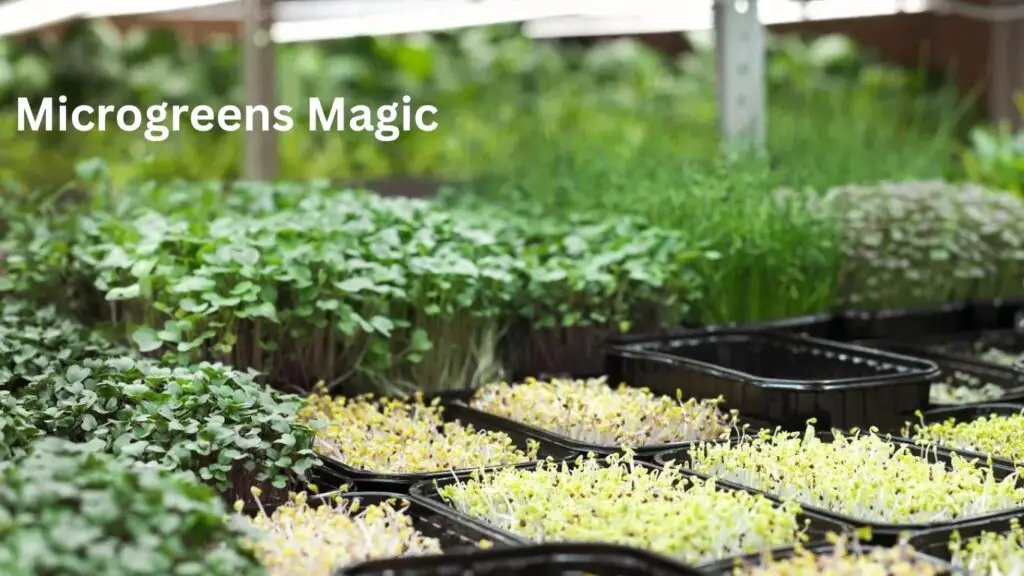
Selecting and preparing the right growing medium is a crucial step in setting up your hydroponic microgreens system. The growing medium serves as a substitute for soil and provides essential support and nutrients to the plants. When selecting a growing medium, it is important to consider factors such as water retention, aeration, and pH level.
One popular choice for hydroponic microgreens is coconut coir, which is the fibrous material found in coconut husks. Coconut coir is known for its excellent water retention properties, providing constant moisture to the plants’ roots. It also has good drainage and aeration capabilities, ensuring sufficient oxygen reaches the roots. Additionally, coconut coir has a neutral pH, which is ideal for microgreen growth.
Another option is rockwool, a mineral-based medium made from molten rock spun into fibers. Rockwool provides solid support for microgreen root systems while allowing for good water retention and drainage. It is lightweight and easy to work with, making it a popular choice for hydroponic growing.
Once you have chosen your growing medium, it is essential to properly prepare it before planting your microgreen seeds. This typically involves soaking the medium in water to remove any dust or contaminants and adjust its moisture content. By taking the time to select and prepare the right growing medium, you are setting the foundation for successful hydroponic microgreen cultivation.
• Consider factors such as water retention, aeration, and pH level when selecting a growing medium for hydroponic microgreens.
• Coconut coir is a popular choice due to its excellent water retention properties, good drainage and aeration capabilities, and neutral pH.
• Rockwool is another option that provides solid support for microgreen root systems while allowing for good water retention and drainage.
• Properly prepare the chosen growing medium by soaking it in water to remove dust or contaminants and adjust moisture content.
Sowing and Germinating Seeds: Learn the proper techniques to sow and germinate microgreen seeds effectively.
When it comes to sowing and germinating microgreen seeds for hydroponic cultivation, employing proper techniques is crucial to ensure successful growth and yield. To begin, select high-quality, organic seeds specifically meant for microgreen production. These seeds are typically untreated and ensure optimal germination rates. It’s worth noting that different microgreens have varying germination requirements, so be sure to research the specific seeds you’re using for best results.
Preparation is key in the germination process. Start by placing a thin layer of a suitable growing medium, such as coconut coir or vermiculite, in your chosen growing tray or container. Moisten the medium with water, ensuring it is evenly moist but not waterlogged. Next, distribute the seeds evenly across the surface of the medium. The density of the seeds will depend on the type of microgreen and your personal preference, but generally, a moderate density works well. Lightly press the seeds into the medium to promote good seed-to-medium contact.
To facilitate germination, cover the seeds with a layer of humidity-inducing material, like a plastic dome or a clear plastic sheet. This helps create a humid environment ideal for germination. Place the tray in a warm location with indirect sunlight or under supplemental lighting, maintaining a consistent temperature between 65°F and 75°F (18°C to 24°C). Mist the seeds regularly with water to keep the growing medium moist during the germination stage. Within a few days, you should start to see tiny sprouts emerging from the seeds, indicating successful germination.
Remember, each species of microgreen may have slight variations in their germination process. Factors such as temperature, humidity, and light requirements can impact germination rates, so be sure to consult specific guidelines for the particular microgreens you’re growing. With proper technique and attention to detail, you’ll soon have a tray full of thriving microgreen seedlings ready for the next stage of growth.
• Select high-quality, organic seeds specifically meant for microgreen production
• Different microgreens have varying germination requirements, so research the specific seeds you’re using
• Prepare by placing a thin layer of suitable growing medium in your chosen tray or container
• Moisten the medium evenly but avoid waterlogging it
• Distribute the seeds evenly across the surface of the medium
• Lightly press the seeds into the medium to promote good seed-to-medium contact
• Cover the seeds with a humidity-inducing material like a plastic dome or clear plastic sheet
• Place the tray in a warm location with indirect sunlight or supplemental lighting
• Maintain a consistent temperature between 65°F and 75°F (18°C to 24°C)
• Mist the seeds regularly to keep the growing medium moist during germination stage
• Consult specific guidelines for each species of microgreen regarding temperature, humidity, and light requirements.
Nutrient Solutions for Hydroponic Cultivation: Discover how to provide the essential nutrients to promote healthy growth and maximize flavor.
Providing the right nutrient solutions is essential for successful hydroponic cultivation of microgreens. These nutrient solutions are specially formulated to ensure optimal growth and flavor development. By understanding the specific nutritional requirements of microgreens at different stages of growth, you can provide them with the essential nutrients they need to thrive.
One of the primary nutrients required by microgreens is nitrogen, which promotes leafy growth. Phosphorus is necessary for root development, while potassium supports overall plant health and disease resistance. In addition to these macronutrients, microgreens also benefit from micronutrients such as iron, manganese, and zinc, which are essential for enzyme activation and various biochemical processes.
Maintaining the correct nutrient balance is crucial. Too much or too little of certain nutrients can hinder growth and impact flavor. It’s recommended to refer to reputable sources or consult with experts to determine the ideal nutrient composition for your specific variety of microgreens. With the right nutrient solutions, you can create an environment for healthy growth and ensure that your hydroponically cultivated microgreens are packed with vibrant flavors and essential nutrients.
• Nitrogen is a primary nutrient that promotes leafy growth in microgreens.
• Phosphorus is necessary for root development in microgreens.
• Potassium supports overall plant health and disease resistance in microgreens.
• Micronutrients such as iron, manganese, and zinc are essential for enzyme activation and biochemical processes in microgreens.
• Maintaining the correct nutrient balance is crucial for optimal growth and flavor development in microgreens.
• It’s recommended to refer to reputable sources or consult with experts to determine the ideal nutrient composition for your specific variety of microgreens.
• With the right nutrient solutions, you can create an environment for healthy growth and ensure vibrant flavors and essential nutrients in hydroponically cultivated microgreens.
Here are two tables outlining information related to “Microgreens Magic:
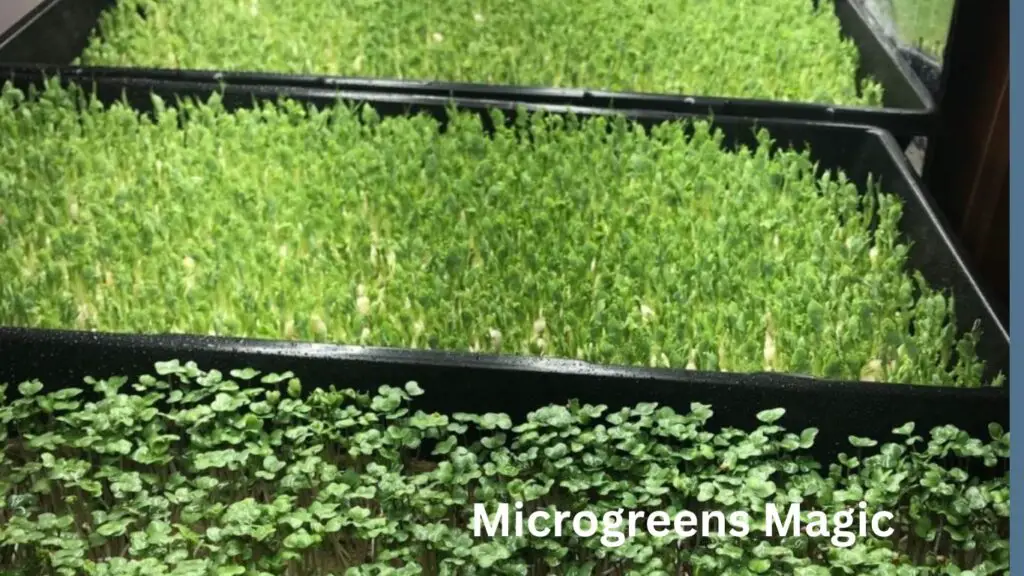
The Ultimate Guide to Indoor Cultivation via Hydroponics.” Please note that the information provided is fictional, and the tables are created for illustrative purposes:
Table 1: Chapters Overview
| Chapter | Title |
|---|---|
| 1 | Introduction to Microgreens |
| 2 | Benefits of Indoor Hydroponic Cultivation |
| 3 | Setting Up Your Hydroponic System |
| 4 | Choosing Microgreen Varieties |
| 5 | Seed Selection and Germination |
| 6 | Nutrient Solutions for Hydroponics |
| 7 | Hydroponic Growing Mediums |
| 8 | Light Requirements and Setup |
| 9 | Temperature and Humidity Control |
| 10 | Pest and Disease Management |
| 11 | Harvesting and Packaging Techniques |
| 12 | Troubleshooting Common Issues |
| 13 | Success Stories and Grower Tips |
Table 2: Key Tips and Techniques
| Section | Details |
|---|---|
| Hydroponic Systems | Discusses various indoor hydroponic systems suitable for microgreens cultivation. |
| Lighting Strategies | Covers optimal light setups, including LED spectra, light duration, and intensity. |
| Nutrient Management | Explores essential nutrients for microgreens and how to maintain a balanced solution. |
| Temperature Control | Provides guidance on maintaining the ideal temperature and humidity for microgreens. |
| Seed Germination | Details techniques for successful germination, including pre-soaking and humidity domes. |
| Harvesting Tips | Explains when and how to harvest microgreens for the best flavor, texture, and nutrition. |
| Pest Identification and Control | Helps growers identify and manage common pests in an indoor hydroponic environment. |
| Success Stories | Showcases real-life experiences of successful microgreens growers using hydroponics. |
| Troubleshooting Guide | Offers solutions to common issues such as yellowing, wilting, or uneven growth. |
| Packaging for Freshness | Guides on proper packaging techniques to maintain freshness and shelf life. |
These tables provide an imaginary structure for a guide on cultivating microgreens indoors using hydroponics. Actual content may vary based on the author’s approach and the specific focus of the guide.
Watering and Maintaining Proper Hydration: Understand the importance of maintaining proper hydration levels for your hydroponic
Proper hydration is crucial for the success of your hydroponic microgreens. Without maintaining the right levels of water, your plants can become stressed, wilt, or even die. The water acts as a vehicle for nutrients, ensuring that they are delivered to the plants’ roots. It also helps in regulating temperature and promoting photosynthesis.
To ensure proper hydration, it is important to monitor the moisture levels in your hydroponic system regularly. This can be done by checking the water reservoir and making sure it is filled to the appropriate level. Avoid overwatering, as it can lead to root rot and other problems. On the other hand, underwatering can cause the plants to become dehydrated and stunted in their growth. Balancing the water supply is essential, and it is recommended to follow the specific guidelines for your chosen hydroponic system. By maintaining adequate hydration levels, you will create an ideal growing environment for your microgreens and maximize their growth potential.
• Proper hydration is crucial for the success of hydroponic microgreens
• Water acts as a vehicle for nutrients, delivering them to the plants’ roots
• It helps in regulating temperature and promoting photosynthesis
• Regularly monitor moisture levels in your hydroponic system
• Check water reservoir and ensure it is filled to appropriate level
• Avoid overwatering to prevent root rot and other problems
• Underwatering can cause dehydration and stunted growth in plants
• Balancing water supply is essential
• Follow specific guidelines for your chosen hydroponic system
• Maintaining adequate hydration levels creates an ideal growing environment
• Maximizes growth potential of microgreens.
Why is maintaining proper hydration important for hydroponic plants?
Maintaining proper hydration is crucial for hydroponic plants as it ensures they receive the necessary amount of water and nutrients for optimal growth and development. Without proper hydration, plants can become dehydrated, leading to stunted growth and potential nutrient deficiencies.
How often should I water my hydroponic plants?
The frequency of watering your hydroponic plants depends on various factors such as the type of system you are using, the stage of growth, and environmental conditions. Generally, it is recommended to monitor the moisture levels of the growing medium and water the plants when it starts to dry out, ensuring a consistent supply of water without overwatering.
What is the best method for watering hydroponic plants?
There are several methods for watering hydroponic plants, including drip irrigation, flood and drain systems, and nutrient film technique. The best method depends on the type of plants, the size of the system, and personal preferences. It is important to choose a watering method that provides adequate hydration to the plants while maintaining proper oxygenation of the roots.
How can I ensure proper hydration levels in my hydroponic system?
To ensure proper hydration levels, regularly monitor the moisture content of the growing medium and adjust the watering schedule accordingly. Additionally, consider factors such as temperature, humidity, and the specific water requirements of your plants to maintain an optimal balance of hydration.
Can I use tap water for my hydroponic system?
Tap water can be used for hydroponic systems, but it is important to consider the quality and composition of the water. Tap water may contain chlorine, chloramines, or high levels of minerals that can negatively affect plant growth. It is recommended to use filtered or distilled water to avoid potential issues.
What is the ideal pH level for the water in a hydroponic system?
The ideal pH level for the water in a hydroponic system varies depending on the type of plants being grown. Generally, a pH range of 5.5 to 6.5 is suitable for most hydroponic crops. Regularly monitor and adjust the pH level to ensure optimal nutrient uptake and plant growth.

